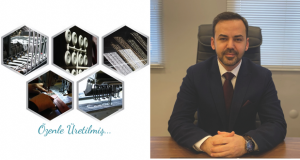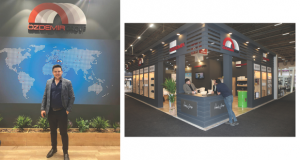Scheduled on 12 February a free webinar will be useful to measure the skin sensory comfort of textiles that will be in direct contact with the skin, for example underwear and sleepwear, T-shirts, pullovers, bed linen and towels.
BÖNNIGHEIM – The Hohenstein Institute will be holding its new webinar, “Feeling good means … wearing comfortable clothes!” on 12 February 2015. This one will be about skin sensory functions. The free webinars, in German at 13.00 hrs (CET) and in English at 16.00 hrs (CET), will introduce the Hohenstein Institute’s testing for skin sensory functions. This offers an objective way of measuring how textiles feel on the skin, and also indicates any potential for improving the products being tested. As well as the tests themselves, the webinar will also introduce the “Skin sensorial comfort vote” quality label. The quality label shows the mark awarded to a product that has been tested, giving consumers a useful indicator of the skin sensory comfort of the textile. This is particularly useful for online and mail-order retailers, as it gives the customer an objective assessment of how the products will feel to wear, without him or her having to try them on. Anyone who is interested can sign up for the online event at www. hohenstein.com/skinsensory-webinar. The technical requirements for taking part in the webinar are a PC connected to the Internet and loudspeakers or a headset.
The free desktop application GoToWebinar, which is available from the Hohenstein Institute, must be installed before the webinar starts. The Hohenstein Institute Press Office will be happy to help with any technical questions about this. The Hohenstein Institute has been measuring the comfort of textiles for about two decades. It uses various skin sensory and thermo-physiological tests to assess how textiles feel on the skin. The test methods were developed by the Hohenstein Institute itself. The test process was validated in numerous wearing tests using volunteers, so that subjective sensations could be measured objectively. The results of these tests are used to produce a comfort vote indicating the skin sensory comfort of a textile. The various figures are obtained by measuring skin sensory parameters. These include the stiffness of a textile and the wet cling index, i.e. how much a textile clings to sweaty skin. The sorption index shows how quickly a textile absorbs sweat from the skin. The Hohenstein Institute also uses the surface index to measure whether the surface of the test sample is too rough or too smooth or neutral from a skin sensory point of view. The number of points where a textile material contacts the skin is measured via the surface characteristics. In order to receive a skin sensorial comfort vote, a textile must not only pass skin sensory tests but also thermo-physiological tests. Here, the Skin Model is used to measure water vapor resistance (i.e. breathability) and thermal insulation. It is especially useful to measure the skin sensory comfort of textiles that will be in direct contact with the skin, for example underwear and sleepwear, T-shirts, pullovers, bed linen and towels. Especially with these textiles, whether they feel comfortable on the skin is an important purchasing criterion for the consumer. To help with this, the Hohenstein Institute can also suggest ways in which comfort could be improved during product development. This, and a reduction in the number of complaints thanks to improved skin sensory comfort in textiles, are just two of the benefits resulting from skin sensory testing at the Hohenstein Institute.
 SleepTech Magazine Mattress, Accessories, Machinery, Raw Materials
SleepTech Magazine Mattress, Accessories, Machinery, Raw Materials


